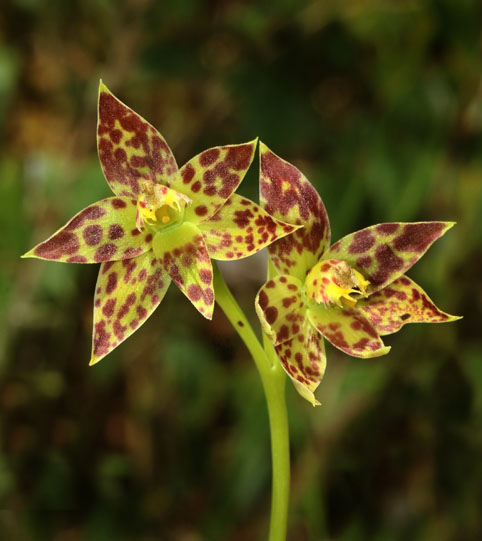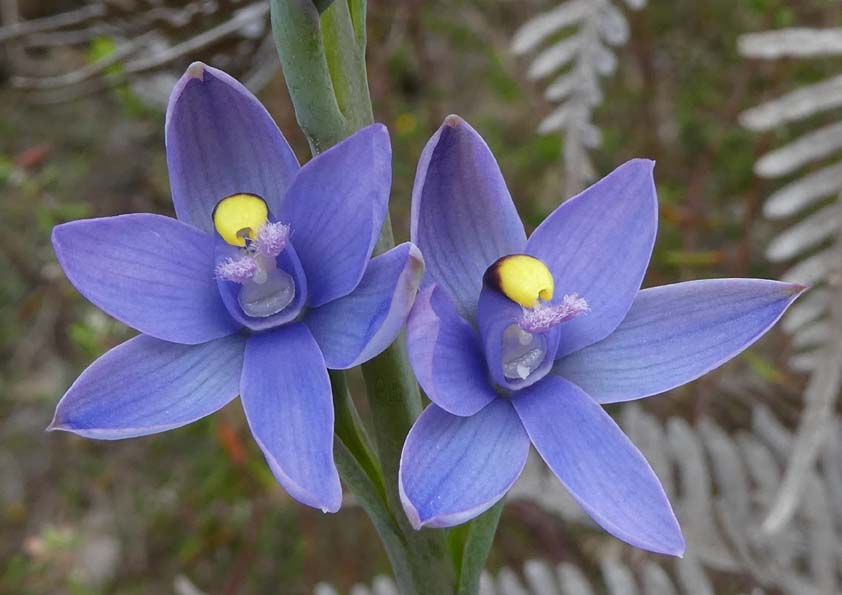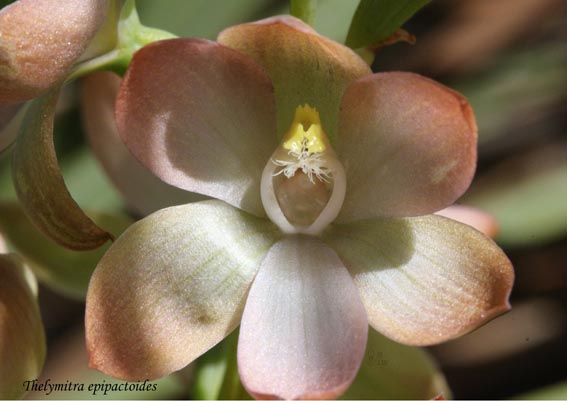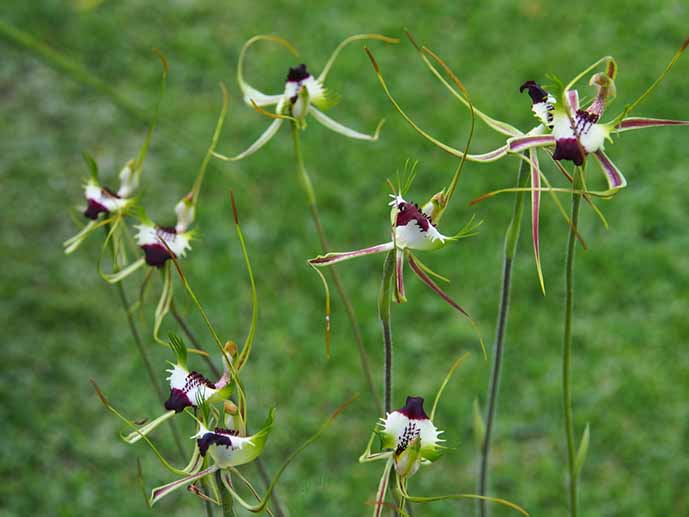The following article appeared in the Native Orchid Society of South Australia Journal September 2017 Volume 41 Number 8. It is a longer and expanded version of the article as George Bentham was one of most influential botanists of the 19th century making it difficult to summarize his life. Even this article barely scratches the surface of this most interesting man.
The theme for the August competition was Striped or Blotched orchids.

Blotches or stripes, which one? An interesting collection was entered. Representing the stripes were John Fennell’s Dipodium pardalinum, Shane Grave’s Cyrtostylis robusta labellum, Helen Lawrence’s Thelymitra cyanea, Robert Lawrence’s Diplodium dolichochilum and Lorraine Badger’s T. campanulata. There were less blotches; Ricky Egel’s Diuris pardina and John Fennell’s T. benthamiana.
T. benthamiana (Leopard Sun Orchid) is a popular orchid to photograph and it is not surprising that it is again (see April 2016) a winner in our competition. It was named after the Englishman George Bentham (1800 – 1884) one of the foremost and influential systemic botanists of the 19th century. At about the age of 16 or 17 years he was introduced to botany, and despite training as a lawyer, he devoted his life to the study of botany.
Though never visiting Australia, he produced the world’s first completed continental flora, Flora Australiensis, a seven volume work produced over 15 years (1863 – 1878). As monumental as this was, at the same time he was working on his greatest work, co-authored with Joseph Dalton Hooker, Genera Plantarum (1862 – 1883) in which is introduced the Bentham & Hooker system of plant classification. This system is still in use by many herbaria around the world. It involved the study of actual plant specimens, a practice which Bentham used himself. For instance, in the production Flora Australiensis, he would examine, critique and describe over a 1,000 species each year.
This practice harkens back to his early days when in his Flora of the French Pyrenees (1826) he adopted the practice of citing nothing second-hand. He never deviated from this. It did help that he was able to read in fourteen modern European languages plus having a good command of Latin, the language used for many botanical writings. This enabled him to access original material which he did by visiting every European herbarium when preparing for his first major work Labiatarum Genera et Species (1832 – 1836).
A shy and unassuming man, Bentham had the respect of the botanical world as was reflected in the various awards he received. Described as a genius, [a man of] indefatigable industry, the premier systematic botanist, he considered himself an amateur botanist, never a professional, even though he donated his extensive collection of more than 1,000 specimens to Kew Gardens in 1854 where he worked full time until his death in 1884. Bentham lived in, and contributed to, the transitional period from the dominance of the gentleman botanist to the government being responsible for collections of national and scientific significance.
He was responsible for introducing into orchid taxonomy (1881) a new classification recognising Subtribes, which precedes Genus in the classification system; introduced the word ‘orchidologist’ to the world in his Notes on Orchideae, 1881. Although there is only one Australian orchid named after Bentham, he has a whole genus of 29 species named after him: Benthamia which is endemic to Madagascar, Mauritius and Reunion. Worldwide, Bentham was directly involved in naming over 200 orchid taxa.
Thanks to Greg Steenbeeke for critiquing this article.
Reference
N. T. Burbidge, ‘Bentham, George (1800–1884)’, Australian Dictionary of Biography, National Centre of Biography, Australian National University, http://adb.anu.edu.au/biography/bentham-george-2979/text4345 , published first in hardcopy 1969, accessed online 29 August 2017.
George Bentham Retrieved August 31, 2017 https://en.wikipedia.org/wiki/George_Bentham
The Taxonomy of the Orchidaceae Retrieved 31 August 2017 from https://en.wikipedia.org/wiki/Taxonomy_of_the_Orchidaceae
Bentham, George (DNB00). (2012, December 29). In Wikisource. Retrieved August 31, 2017, from https://en.wikisource.org/w/index.php?title=Bentham,_George_(DNB00)&oldid=4211195
Bentham and Hooker system of Classification. Accessed August 31, 2017 from http://vle.du.ac.in/mod/book/print.php?id=13270&chapterid=29150
Notes on Orchidaea (Journal of the Linnean Society)
English Oxford Living Dictionary. Accessed 31 August, 2017 from https://en.oxforddictionaries.com/definition/orchidologist











